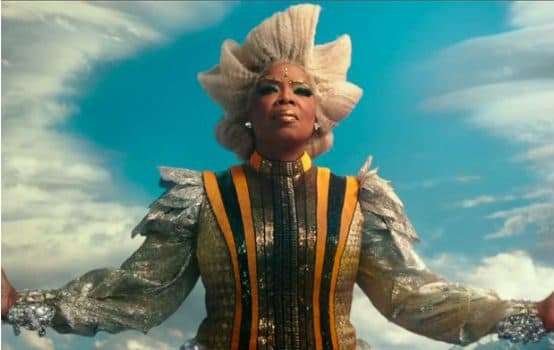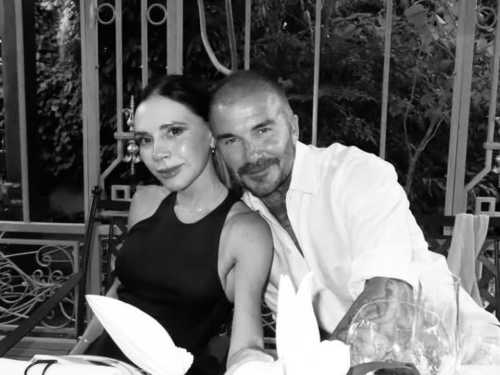
(Caution: This review contains spoilers)
I went into Ava DuVernay’s adaptation of A Wrinkle in Time with my eyes wide open. I was well aware that, in the process of Disneyfication, much of author Madeleine L’Engle’s spiritual subtext would inevitably be excised. “Wrinkle” is a strange, surreal, metaphysically weighty story—not exactly the traditional stuff of children’s novels and impossible to adapt for the screen without losing something in translation.
But I was wrong: this version of Wrinkle doesn’t ignore L’Engle’s motifs, nor does it simply mangle them. Instead, it inverts them entirely, transforming a story of cosmic good and evil into a banal Gen-Z empowerment parable.
As the story begins, Meg Murry (Storm Reid) is struggling to cope with the absence of her astrophysicist father (Chris Pine), who disappeared while researching the “tesseract.” This tesseract, we learn, is the eponymous “wrinkle in time” that allows for faster-than-light passage through spacetime. That’s little consolation, though, to the friendless, forlorn Meg.
And then one day, Meg is jolted from her reverie by the arrival of three strange extraterrestrial visitors (Reese Witherspoon, Mindy Kaling, and Oprah Winfrey) who may know something about her father’s whereabouts. Along with her friend Calvin (Levi Miller) and precocious younger brother Charles Wallace (Deric McCabe), Meg sets off on a galaxy-spanning journey across exotic, lushly rendered worlds. Their odyssey naturally culminates in a visit to the dark world of Camazotz, where there lurks an evil known only as “The IT.”
Longtime fans of the novel will recognize most of the critical plot points here. What the film adaptation lacks, however, is something far more important than any particular story moment: namely, a sense of cosmic purpose.
The worldview underlying L’Engle’s books is far more alien to the modern mind than any of her fantastical creatures. L’Engle’s universe is a landscape of primordial conflict between absolute good and absolute evil (for instance, her archvillains, the Echthroi, are described as “sky tearers. Light snuffers. Planet darkeners. The dragons. The worms. Those who hate”). And as written, the narrative of Wrinkle reflects this perpetual clash at the level of ultimate reality.
None of this is meaningfully reflected onscreen. Instead, virtually every event in DuVernay’s Wrinkle is filtered through the prism of Meg’s individual empowerment. Over and over again, cosmic beings urge Meg to find herself, accept herself, be at peace with herself, and so on. By the third time this happens, we’ve crossed from “irritatingly saccharine” into “positively obnoxious” territory. Worse, this all means that Meg’s story isn’t one of change or growth, but merely one of self-acceptance. (It certainly doesn’t help that Meg never comes off as a spunky, John Hughes-style nonconformist. For the vast majority of the film, she seems simply sullen.)
In the same vein, the evil power of The IT manifests as simply self-doubt (for example, The IT is apparently the force that promotes unrealistic beauty standards). This “supreme evil” is a far cry from its analog in L’Engle’s novel, a monstrous entity seeking to annihilate free will and remake all things in ITs own image. This philosophical desiccation gives rise to the film version’s worst moment of all.
In one of the novel’s most pivotal scenes, Meg confronts The IT after the dark power has enslaved Charles Wallace’s soul. As L’Engle tells it, in this instant Meg realizes that her weapon against evil is her capacity for love—a freely chosen, self-giving love that alone can shatter the bonds of darkness. “Now she was even able to look at him, at this animated thing that was not her own Charles Wallace at all. She was able to look and love. …‘I love you!’ she cried. ‘I love you, Charles! I love you!’”
But when this same moment arrives in the movie version, DuVernay’s Meg leads off with something quite different: “You love me! You love me because I deserve to be loved!” (Yes, that’s actually in the screenplay.) Evidently, Meg no longer must learn to give love, but to demand it. In 2018, ‘tis more blessed to receive than to give.
It would be hard to imagine a more aberrational take on L’Engle’s philosophy. Not only does the Wrinkle novel preach selflessness, the message comes through even stronger in Wrinkle’s sequels—particularly A Wind in the Door and Many Waters. Wind even argues explicitly that self-sacrifice—to the point of death—is the highest form of love and the most powerful weapon against darkness. Plainly, though, DuVernay is having none of it.
Perhaps what’s most disappointing, though, isn’t that Wrinkle shakes up its source material, but that it does so in such a boring and predictable way. A more daring take on Wrinkle might have depicted Meg as a young Muslim girl with an aptitude for science who comes to understand Allah’s grand design for the universe as she confronts menacing djinn across the cosmos. Such an adaptation would have been highly controversial for any number of reasons, but at least it would have been interesting. It would have said something beyond the bromide “love yourself.”
DuVernay’s Wrinkle tragically lacks that courage. At one point, one of Meg’s cosmic guides rattles off a list of humankind’s great warriors against the darkness, including Einstein, Curie, Gandhi, and Maya Angelou. Notably absent from that list are Jesus, St. Francis, and Buddha, all of whom are named in the novel. It’s no good to justify stripping these religious references in the name of “inclusion”—L’Engle herself was accused of syncretism for mentioning all these figures in the same breath. Such edits serve only to impoverish the narrative, leaving Wrinkle’s world utterly devoid of transcendent meaning. But perhaps that’s precisely the point: within the “immanent frame” that remains when all higher ends are abandoned, self-acceptance is the only goal really worth pursuing. And that’s all Wrinkle is interested in.
On the technical front, Wrinkle does have some redeeming qualities—its extraterrestrial landscapes are beautifully conceived, and it’s unafraid to be visually inventive (staging the final battle with The IT inside a gigantic brain, complete with whipping axons and clawing dendrites, is a positively inspired move). But none of this, unfortunately, can make up for the film’s soggy core.
At bottom, Wrinkle is a profoundly uninspired product of modern mass culture. That’s a shame, because it didn’t need to be. In the hands of a storyteller more willing to engage the book’s messages, perhaps the final result would have been far different. As things stand, however, the words of another well-known metaphysical mythmaker sum things up nicely.
“Go, then, there are other worlds than these.”
John Ehrett is a native of Dallas, Texas, and currently lives in Los Angeles, California. He holds a J.D. degree from Yale Law School and a certificate in Theology and Ministry from Princeton Seminary.
Sourse: theamericanconservative.com






